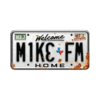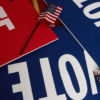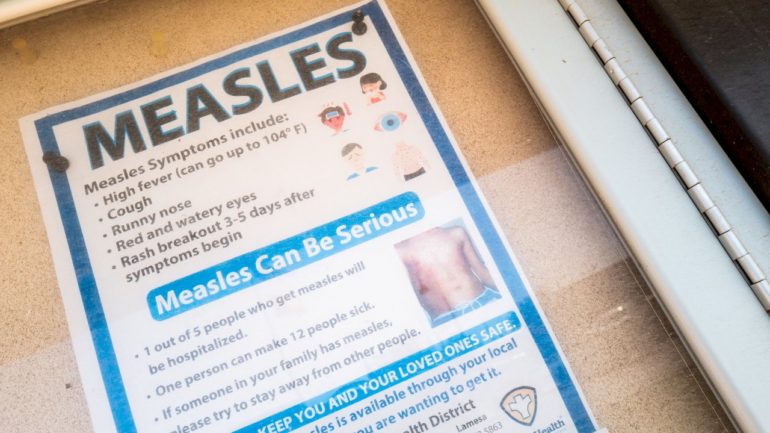Listeners:
Top listeners:
-
 play_arrow
play_arrow
94.3 Rev-FM The Rock of Texas | Where Texas Rocks
-
 play_arrow
play_arrow
99.1 The Buck Texas Country's Number 1 Country
-
 play_arrow
play_arrow
103.7 MikeFM Your Texas Hill Country Mix Tape
-
 play_arrow
play_arrow
KERV 1230 AM
-
 play_arrow
play_arrow
JAM Sports 1 JAM Broadcasting Sports 1
-
 play_arrow
play_arrow
JAM Sports 2 JAM Broadcasting Sports 2

(WASHINGTON) — The Department of Health and Human Services and the Food and Drug Administration announced on Tuesday a series of measures to phase out eight artificial food dyes and colorings from America’s food supply by the end of next year.
Speaking at a news conference, FDA Commissioner Dr. Marty Makary said the agencies are looking to revoke authorization for two synthetic food colorings and to eliminate six remaining synthetic dyes used in cereal, ice cream, snacks, yogurts and more.
“Today, the FDA is taking action to remove petroleum-based food dyes from the U.S. food supply and from medications. For the last 50 years, American children have increasingly been living in a toxic soup of synthetic chemicals,” he told reporters. “The FDA is also announcing plans today to authorize four additional natural color additives using natural ingredients in the coming weeks, while also accelerating the review and approval of other natural ingredient colors.”
Makary claimed studies have found a like between petroleum-based synthetic dyes and health conditions, including attention-deficit/hyperactivity disorder, obesity, diabetes, cancer and gastrointestinal issues.
‘Why are we taking a gamble?” he said. “While America’s children are sick and suffering, 41% of children have at least have at least one health condition, and one in five are on medication. The answer is not more Ozempic, more ADHD medication and more antidepressants. There’s a role for those medications, but we have to look at underlying root causes.
HHS Secretary Robert F. Kennedy Jr. was also due to speak at the news conference.
Former President Joe Biden’s administration in January started the process to ban one artificial dye, Red No. 3, which will need to be removed from food by January 2027 and from medications by 2028 because it was shown to cause cancer in rats.
Kennedy is now seeking to remove the six other petroleum-based dyes approved by the FDA. This includes Green No. 3, Citrus Red No. 2, Red No. 40, Orange B, Yellow No. 5, Yellow No. 6, Blue No. 1 and Blue No. 2. The agency is also taking steps to revoke the authorization for two synthetic food colorings — Citrus Red No. 2 and Orange B — within the coming months.
The department is also authorizing four new natural color additives.
It is not yet clear what enforcement mechanism Kennedy will seek to implement the new changes.
The timeline to phase out synthetic dyes comes after Kennedy told food industry leaders at a meeting last month that he wanted their companies to remove artificial dyes from their products by the end of his four-year term, according to a memo describing the meeting, which was obtained by ABC News.
Kennedy’s announcement Tuesday speeds up that process — and alert companies that Kennedy intends to make good on his warning quickly.
From candy to breakfast cereal to medication, synthetic food dyes are in a wide range of products that Americans consume. Studies suggest their vibrant color makes food more appealing and could even increase appetite.
The health effects of the dyes are not fully understood, but many other countries have either banned the additives outright or required food packaging warning labels about the health risks.
All dyes have the potential to spark allergic reactions for a small minority. Several dyes have been linked to hyperactivity and behavioral problems in children or have been shown to cause cancer in mice or rats — but none have shown to cause cancer in humans.
Already, red and blue states alike have taken matters into their own hands in removing artificial food dyes from certain foods. Both West Virginia and California have passed laws to ban a handful of food dyes from school lunches, with plans to extend the ban to a broader, statewide level too.
In West Virginia, the ban on artificial dyes in school lunch will go into effect in August, making it the first state in the country to implement such restraints. In California, it will take effect in 2028.
Twenty-six other states, from Iowa to Washington and from to Texas to Vermont, are considering similar legislation around banning food dyes or other chemical additives in foods, according to a list compiled by the Environmental Working Group, an advocacy organization that focuses on chemicals and toxins.
The Office of Environmental Health Hazard Assessment within California’s Environmental Protection Agency in 2021 concluded a two-year study into seven synthetic food dyes that found associations with certain neurobehavioral outcomes in some children.
Researchers also found that the FDA’s current level of “acceptable daily intake” levels for the dyes may be too high to protect children from the potential behavioral impact, the report said.
Copyright © 2025, ABC Audio. All rights reserved.
Written by: ABC News
Similar posts
-
Top popular

Ingram man charged with murder after fatal shooting

Kerr Crime Stoppers offering reward up to $5,000 for information in last week’s non-viable school threat

KISD asks parents to communicate with children about words and actions after ‘copy cat’ threat note found at middle school

City of Kerrville Parks and Recreation reminds citizens that a Red Flag Warning is in effect until further notice

City of Kerrville says that May 7 General and Special Elections will proceed



